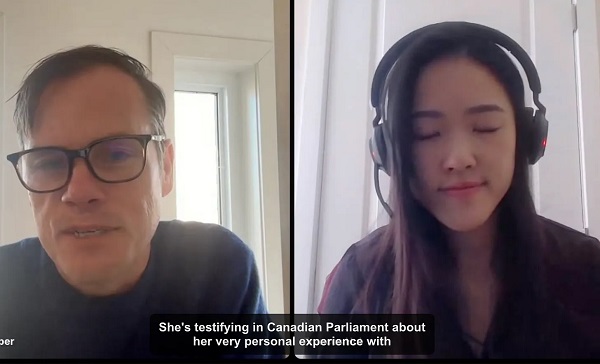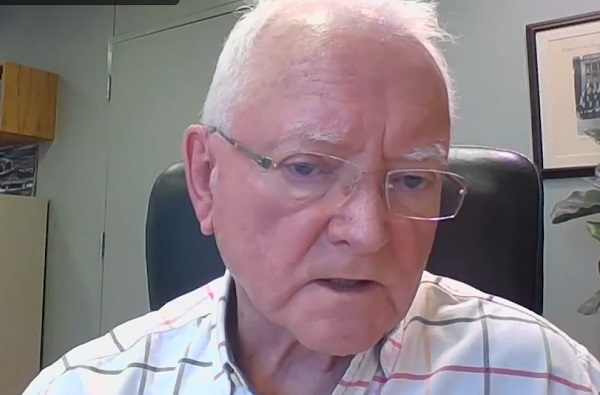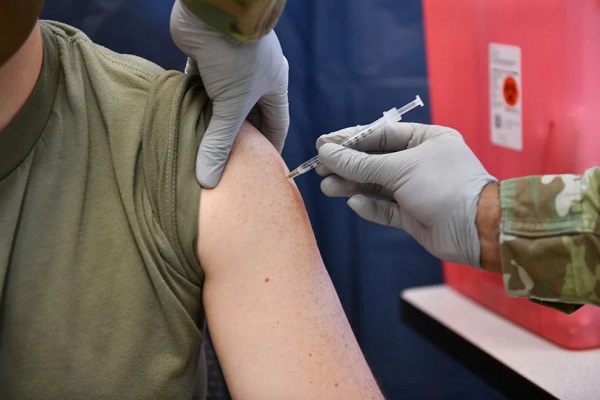Opinion
December 2019 progress report on Red Deer Air Quality, Are we serious about this?

The fine particulate issue has been plaguing Red Deer for a decade. CBC did a story on Sept 9 2015 describing Red Deer’s air quality as the worst in Alberta which has the distinction of being the worst in Canada. A committee was established. This is part of their update.
December 2019
The Red Deer Fine Particulate Matter Implementation Progress Report (the report) provides an update on
the state of the management actions for fine particulate matter management in the Red Deer area. Alberta
Environment and Parks, and members of the Red Deer Air Quality Advisory Committee (the Advisory
Committee) developed three priority objectives to implement management actions to reduce fine particulate
matter (PM2.5) levels in the Red Deer Air Management Area. This report, therefore, presents highlights of
the progress of the Advisory Committee and its represented stakeholders have made in implementing the
Red Deer Fine Particulate Matter Response (the response).
The Red Deer area exceeded both the Canada-wide Standards (CWS) and the Canadian Ambient Air Quality Standards (CAAQS) for fine particulate matter (PM2.5). In 2015 the Advisory Committee was
established and charged with working to reduce the ambient levels of PM2.5 in the Red Deer Air Quality Management Area by implementing a management response. The response was released in April 2016 for implementation over 15 years.
The response contains three objectives: Action, Investigation, and
Engagement. Each objective contains management actions that the Advisory Committee can implement in
three phases: Phase 1, ending December 2020; Phase 2, ending December 2025; and Phase 3, ending
December 2030.
Purpose
The purpose of this report is to provide an update on the efforts to implement the response within the three
priority objectives that have informed the activities of Alberta Environment and Parks and the multistakeholder group to date. The three objectives are: Objective 1 (Action), Objective 2 (Investigation), and Objective 3 (Engagement).
The response is currently in Phase 1 of implementation (2015 – 2020). This report highlights the progress made since the implementation of the response in 2016, any additional priorities identified, actions to achieve by the conclusion of Phase 1 (in 2020), and the context that informs the path forward. For more
information on these objectives, please refer to the response. The goal of the response is to reduce ambient fine particulate matter concentrations and remain below the CAAQS, as measured at ambient air quality monitoring stations within the Red Deer Air Quality Management Area.
The science report identified transportation as a major source of oxides of nitrogen (NOx) and VOCs. Transportation related sources release these gasses and in turn lead to the formation of secondary PM2.5 in Red Deer. Additional investigation, specifically Provincial Air Quality Photochemical Modelling 4 continues to highlight transportation-related sources as a significant contributor to emissions that result in the formation of PM2.5. Transportation related sources include on-road and off-road sources. A wide range
of vehicles, engines and equipment types including personal and commercial vehicles, and combustion driven lawn and garden equipment contribute to transportation related emissions. Transportation related sources are concentrated near population centers.
There is more to this report but I would like to respond.
We all know that the city is trying, greening the fleet, idle-free zones, LED bulbs etc. but there are those who believe that air quality is not that important.
For example; Don’t idle but do drive 4 extra kilometres and 6 minutes longer through residential neighbourhoods and school zones. I am talking about the immediate pressing issue of the Molly Banister Extension.
We have discussed the economic costs of not extending Molly Banister with widening roads, traffic circles, pedestrian bridges and other secondary roads. We talked about business commitments to Bower Mall and south west businesses being overturned. We talked about building 6 lane roads through residential areas and school playgrounds.
We talked about building a bridge over a creek in a cow pasture that has been fenced preventing access to pedestrians and wildlife for decades.
Now we shall talk about air quality.
Thousands of cars driving 4 extra kilometres and 6 extra minutes everyday, 3,000 x 4 x 365 =4,380,000 kms per year and that is a minimal estimate. 23,500 cars per day on 32 Street servicing many neighbourhoods along 32 St. and also along 22 St.
We are talking about bridging the Piper Creek for vehicular traffic to reduce commuting.
Less commuting. Less emissions. Better air quality. Is that not the goal?
Alberta
Alberta’s embrace of activity-based funding is great news for patients

 From the Montreal Economic Institute
From the Montreal Economic Institute
Alberta’s move to fund acute care services through activity-based funding follows best practices internationally, points out an MEI researcher following an announcement made by Premier Danielle Smith earlier today.
“For too long, the way hospitals were funded in Alberta incentivized treating fewer patients, contributing to our long wait times,” explains Krystle Wittevrongel, director of research at the MEI. “International experience has shown that, with the proper funding models in place, health systems become more efficient to the benefit of patients.”
Currently, Alberta’s hospitals are financed under a system called “global budgeting.” This involves allocating a pre-set amount of funding to pay for a specific number of services based on previous years’ budgets.
Under the government’s newly proposed funding system, hospitals receive a fixed payment for each treatment delivered.
An Economic Note published by the MEI last year showed that Quebec’s gradual adoption of activity-based funding led to higher productivity and lower costs in the province’s health system.
Notably, the province observed that the per-procedure cost of MRIs fell by four per cent as the number of procedures performed increased by 22 per cent.
In the radiology and oncology sector, it observed productivity increases of 26 per cent while procedure costs decreased by seven per cent.
“Being able to perform more surgeries, at lower costs, and within shorter timelines is exactly what Alberta’s patients need, and Premier Smith understands that,” continued Mrs. Wittevrongel. “Today’s announcement is a good first step, and we look forward to seeing a successful roll-out once appropriate funding levels per procedure are set.”
The governments expects to roll-out this new funding model for select procedures starting in 2026.
* * *
The MEI is an independent public policy think tank with offices in Montreal, Ottawa, and Calgary. Through its publications, media appearances, and advisory services to policymakers, the MEI stimulates public policy debate and reforms based on sound economics and entrepreneurship.
espionage
Hong Kong Detains Parents of Activist Frances Hui Amid $1M Bounty, Echoing Election Interference Fears in Canada

 Sam Cooper
Sam Cooper
In a deeply alarming escalation of transnational repression that echoes threats made against a Canadian election candidate, Hong Kong’s national security police today detained the parents of U.S. resident Frances Hui, a prominent Hong Kong democracy activist who previously testified before Canada’s Parliament about Chinese government harassment on Western soil.
Hui, who fled Hong Kong and was granted asylum in Washington, D.C., faces a HK$1 million bounty issued in December 2023 under Beijing’s sweeping National Security Law. She had warned Canadian lawmakers that the Chinese Communist Party was targeting overseas activists—including herself and others with Canadian ties—through intimidation, surveillance, and harassment campaigns executed by proxies abroad.
The detention in Hong Kong on Thursday, April 10, comes just one week after the U.S. State Department sanctioned six Hong Kong and Chinese officials and two days after a bill was reintroduced in Congress to shutter Hong Kong’s de facto embassies in the U.S. Hui’s advocacy played a major role in both moves.
Hui, the Advocacy and Policy Coordinator for the Committee for Freedom in Hong Kong (CFHK) Foundation, condemned the police action against her family as “emotional blackmail.”
“My parents and I have had no contact since I left Hong Kong in 2020,” Hui said in a statement. “The police arranged a crowd of media to photograph their exit from the police station—to humiliate them. This is a deliberate attempt to intimidate and silence me.”
The targeting of Hui’s family may intensify concerns in diaspora communities that the Chinese Communist Party is attempting to obtain multiple objectives, potentially sending a message timed to Canada’s 2025 federal election—especially after recent remarks from a former Liberal candidate in Markham–Unionville stoked widespread alarm.
Paul Chiang, who resigned last week amid an RCMP review into controversial remarks, had reportedly suggested that Conservative opponent Joe Tay—a Canadian citizen wanted under Hong Kong’s National Security Law—could be taken to the Chinese Consulate in Toronto to claim a bounty.
Chiang, a former Markham police officer who unseated longtime Conservative representative Bob Saroya to win Markham–Unionville for Team Trudeau in 2021, stepped down after the RCMP confirmed it was investigating his comments to Chinese-language media in January 2025.
On the latest threats to Hui and her family, CFHK Foundation President Mark Clifford said: “This is outrageous targeting of a young woman who has lived in the U.S. for the last five years and whose advocacy and freedom of speech is protected under U.S. laws. The CFHK Foundation will continue to support Frances and all those with the courage to speak out against the crimes being perpetrated in Hong Kong and the low-class bullies who perpetrate them.”
Earlier in Canada’s election campaign, which is quickly becoming marked by reports of Chinese interference, Tay, a former Hong Kong broadcaster whose independent journalism has drawn retaliation from Beijing, quickly rejected Chiang’s apology, calling it “the tradecraft of the Chinese Communist Party.” He added: “They are not just aimed at me; they are intended to send a chilling signal to the entire community to force compliance with Beijing’s political goals.”
As previously reported by The Bureau, Hui detailed her experience with transnational repression in testimony before Canada’s Subcommittee on International Human Rights. She recounted how she was targeted by a naturalized U.S. citizen—now under federal indictment in Massachusetts—who allegedly spied on dissidents for the Chinese government.
“Between 2018 and 2022, this individual spied on members and leaders of Boston-area Chinese family associations and community organizations, as well as anti-PRC dissidents,” Hui told the committee. “In one incident, he mobilized hundreds to harass us. I was followed home and had to call the police. I regularly receive phone calls from men speaking Chinese.”
Developing…
The Bureau is a reader-supported publication.
To receive new posts and support my work, consider becoming a free or paid subscriber.
Invite your friends and earn rewards
-

 2025 Federal Election15 hours ago
2025 Federal Election15 hours agoLiberals Replace Candidate Embroiled in Election Interference Scandal with Board Member of School Flagged in Canada’s Election Interference Inquiry
-

 Alberta14 hours ago
Alberta14 hours agoIs Canada’s Federation Fair?
-

 Alberta13 hours ago
Alberta13 hours agoProvince introducing “Patient-Focused Funding Model” to fund acute care in Alberta
-

 espionage16 hours ago
espionage16 hours agoU.S. Experts Warn Canada Is Losing the Fight Against PRC Criminal Networks—Washington Has Run Out of Patience
-

 Alberta9 hours ago
Alberta9 hours agoMedical regulator stops short of revoking license of Alberta doctor skeptic of COVID vaccine
-

 Automotive17 hours ago
Automotive17 hours agoTesla Vandals Keep Running Into The Same Problem … Cameras
-

 International10 hours ago
International10 hours agoUN committee urges Canada to repeal euthanasia for non-terminally ill patients
-

 COVID-193 hours ago
COVID-193 hours agoMassive new study links COVID jabs to higher risk of myocarditis, stroke, artery disease



